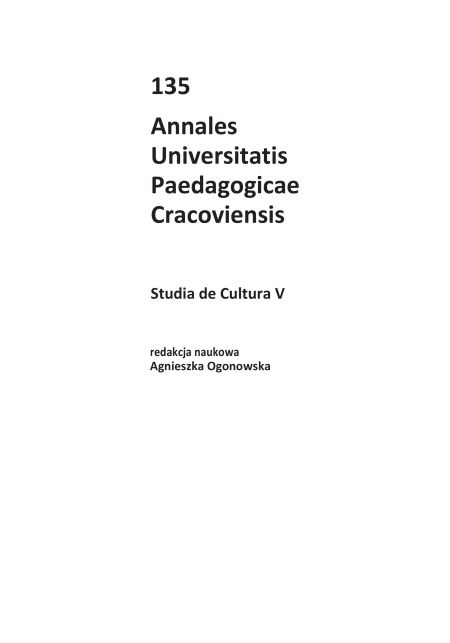Abstrakt
Film adaptation as the dominating interpretation of the original reading
According to aesthetic sociologism, film is the result of socio-economic determinants, and its shape is determined by the ideology of the group expressing itself. As addressed to a wide audience, it refers to the stereotypes and ideological matrices more than literature. Its reproduction is made easier by distribution by electronic media and the collective nature of production and reception. According to Industry-centric Adaptation Model, adapted texts represent secondary senders and gain new ideological meanings. The adaptation turns out to be a commodification of reading. It is inscribed in the needs of broadcasters and previously formed viewers’ expectations by the choice of actors dictated by their earlier roles, the use of humor, and the ideological function of colour and lighting. Ideological significance is also shaped by the music and the use, or lack of use of the native language of individual characters. Inscriptions on video copies are adjusted to customers’ expectations within linguistic and cultural circles. Functioning of the film camera determines that each film is deposited in the paradigms of Western civilization. When the reading is preceded by watching, ideological matrices can affect the reception of the book.
Bibliografia
Adorno T. (2004), Aesthetic Theory, London.
Zobacz w Google Scholar
Bourdieu P. (2001), Reguły sztuki. Geneza i struktura pola literackiego, przeł. A. Zawadzki, Kraków.
Zobacz w Google Scholar
Dewey J. (1975), Sztuka jako doświadczenie, przeł. A. Potocki, Warszawa.
Zobacz w Google Scholar
Greenblatt S. (2006), Poetyka kulturowa. Pisma wybrane, red. i wstęp K. Kujawińska-Courtney, Kraków.
Zobacz w Google Scholar
Helman A. (1964), Rola muzyki w filmie, Warszawa.
Zobacz w Google Scholar
Ingarden R. (1958), Studia z estetyki. Tom drugi, Warszawa.
Zobacz w Google Scholar
Keneally T. (1987), Schindler’s Ark, London.
Zobacz w Google Scholar
Kress G., van Leeuwen T. (1996), Reading images. The grammar of visual design, London.
Zobacz w Google Scholar
Lissa Z. (2008), Estetyka muzyki filmowej, [w:] Wybór pism estetycznych, Kraków.
Zobacz w Google Scholar
Markowski M.P. (2006), Bachtin, [w:] A. Burzyńska, M.P. Markowski, Teorie literatury XX wieku. Podręcznik, Kraków. Mysza dobrze zrobiony ale Linda totalnie nie na miejscu, wpis z 28 VI 2001 r., http://www.filmweb.pl/Pan.Tadeusz/discussion?page=7, dostęp 5 VI 2010 r.
Zobacz w Google Scholar
Nichols B. (2001), Dzieło kultury w epoce systemów cybernetycznych [w:] Widzieć, myśleć, być. Technologie mediów, wybór, wstęp i oprac. A. Gwóźdź, Kraków.
Zobacz w Google Scholar
Ong W.J. (1992), Oralność i piśmienność. Słowo poddane technologii, przeł. J. Japola, Lublin.
Zobacz w Google Scholar
Ossowski S. (1958), U podstaw estetyki, Warszawa.
Zobacz w Google Scholar
Rorty R. (1996), Kariera pragmatysty, przeł. T. Biedroń, [w:] U. Eco, R. Rorty, J. Culler,
Zobacz w Google Scholar
Ch. Brooke-Rose Interpretacja i nadinterpretacja, red. S. Collini, Kraków.
Zobacz w Google Scholar
Shusterman R. (1998), Estetyka pragmatyczna. Żywe piękno i refleksja nad sztuką, przeł. A. Chmielewski, E. Ignaczak, L. Koczanowicz, Ł. Nysler, A.J. Orzechowski, red. A. Chmielewski, Wrocław.
Zobacz w Google Scholar
Stachera K. (2007), Ludzie bezdomni, Warszawa.
Zobacz w Google Scholar
Wajda A. (2000), Końcowe refleksje reżysera. Wypowiedź dla Vision Film Distribution Company, http://www.pantadeusz.com/film/rezyser.html, dostęp 14 IX 2010 r.
Zobacz w Google Scholar

